#Saint John of the Cross
Explore tagged Tumblr posts
Text

Happy Feast Day
Saint John of the Cross
Doctor of the Church
1542-1591
Feast day: December 14 (New) November 24 (Trad)
Patronage: contemplative life, contemplatives
Saint John of the Cross, a Spanish mystic priest, was a major figure of the Counter-Reformation. He suffered many hardships of life in his youth. He boarded at a school for the poor where he felt the call of a religious vocation. In 1563, he joined the Carmelites and in 1567 he befriended St.Teresa of Avila. They both worked to reform the lax Carmelite order to a more strict, prayerful, and simpler order. (the Discalced Carmelites) There were major disagreements and the Carmelites even incarcerated St. John for disobedience. During imprisonment, John wrote some of his deepest spiritual poetry and contemplations, which is why he is a Doctor of the Church. St. John of the Cross died of a skin infection.
Prints, plaques & holy cards available for purchase. (website)
47 notes
·
View notes
Text

3 notes
·
View notes
Text
SAINT OF THE DAY (December 14)

December 14 is the liturgical memorial of Saint John of the Cross, a 16th-century Carmelite priest best known for reforming his order together with Saint Teresa of Avila and for writing the classic spiritual treatise, “The Dark Night of the Soul.”
Honored as a Doctor of the Church since 1926, he is sometimes called the “Mystical Doctor,” as a tribute to the depth of his teaching on the soul's union with God.
The youngest child of parents in the silk-weaving trade, John de Yepes was born during 1542 in Fontiveros near the Spanish city of Avila.
His father Gonzalo died at a relatively young age, and his mother Catalina struggled to provide for the family.
John found academic success from his early years but failed in his effort to learn a trade as an apprentice.
Instead, he spent several years working in a hospital for the poor and continuing his studies at a Jesuit college in the town of Medina del Campo.
After discerning a calling to monastic life, John entered the Carmlite Order in 1563.
He had been practicing severe physical asceticism even before joining the Carmelites and got permission to live according to their original rule of life – which stressed solitude, silence, poverty, work, and contemplative prayer.
John received ordination as a priest in 1567 after studying in Salamanca but considered transferring to the more austere Carthusian order rather than remaining with the Carmelites.
Before he could take such a step, however, he met the Carmelite nun later canonized as Saint Teresa of Avila.
Born in 1515, Teresa had joined the Order in 1535, regarding consecrated religious life as the most secure road to salvation.
Since that time, she had made remarkable spiritual progress, and during the 1560s, she began a movement to return the Carmelites to the strict observance of their original way of life.
She convinced John not to leave the order but to work for its reform.
Changing his religious name from “John of St. Matthias” to “John of the Cross,” the priest began this work in November of 1568, accompanied by two other men of the Order with whom he shared a small and austere house.
For a time, John was in charge of the new recruits to the “Discalced Carmelites” – the name adopted by the reformed group, since they wore sandals rather than ordinary shoes as sign of poverty.
He also spent five years as the confessor at a monastery in Avila led by St. Teresa.
Their reforming movement grew quickly but also met with severe opposition that jeopardized its future during the 1570s.
Early in December of 1577, during a dispute over John's assignment within the Order, opponents of the strict observance seized and imprisoned him in a tiny cell.
His ordeal lasted nine months and included regular public floggings along with other harsh punishments.
Yet it was during this very period that he composed the poetry that would serve as the basis for his spiritual writings.
John managed to escape from prison in August of 1578, after which he resumed the work of founding and directing Discalced Carmelite communities.
Over the course of a decade, he set out his spiritual teachings in works such as “The Ascent of Mount Carmel,” “The Spiritual Canticle,” and “The Living Flame of Love” as well as “The Dark Night of the Soul.”
But intrigue within the order eventually cost him his leadership position, and his last years were marked by illness along with further mistreatment.
John of the Cross died in the early hours of 14 December 1591, nine years after St. Teresa of Avila's death in October 1582.
Suspicion, mistreatment, and humiliation had characterized much of his time in religious life, but these trials are understood as having brought him closer to God by breaking his dependence on the things of this world.
Accordingly, his writings stress the need to love God above all things – being held back by nothing — and likewise holding nothing back.
Only near the end of his life had St. John's monastic superior recognized his wisdom and holiness.
Though his reputation had suffered unjustly for years, this situation reversed soon after his death.
He was beatified in 1675, canonized in 1726, and named a Doctor of the Church in the 20th century by Pope Pius XI.
In a letter marking the 400th anniversary of St. John's death, Pope John Paul II – who had written a doctoral thesis on the saint's writings – recommended the study of the Spanish mystic, whom he called a “master in the faith and witness to the living God.”
2 notes
·
View notes
Text

The Madonna and Child with Saint Teresa of Avila and Saint John of The Cross.
#Blessed Virgin Mary#Jesus Christ#Saint Teresa of Avila#Saint John of The Cross#Roman Catholic#Holy Trinity
5 notes
·
View notes
Text
With the map of the winter sky you drew for me, I will go out before dawn, into a square now empty of men, and life my eyes to meet the stellar passersby, who slowly move around the Pole of the Bear. Of the most glittering I will ask: “Are you Rigel? Are you Betelgeuse? Sirius? Or Capella?” still in much doubt about the answer. Meanwhile, I will think about San Juan, for that will be the night of God, after the night of the senses and the soul, and the stars, recognized or unknown, for me will be so many angels whose silent flight guides me toward day. And I will also think of you who, equally absorbed, are contemplating the same firmament from another parallel, feeling, like me, an outer ice and inner fire, while our hearts, so distant from each other, and still prisoners of time, beat in unison.
— Margherita Guidacci, Landscape with Ruins: Selected Poetry of Margherita Guidacci, transl. by Ruth Feldman, (1992)
#Italian#Margherita Guidacci#Landscape with Ruins: Selected Poetry of Margherita Guidacci#Ruth Feldman#1992#Saint John of the Cross
5 notes
·
View notes
Text
How gentle and loving is Your awakening, O Bridegroom Word, in the center and depth of my soul… Awaken and enlighten me, my Lord, so I might know and love the blessings You ever propose to me, and I might understand that You have moved to bestow favors on me and have remembered me.
St. John of the Cross, Living Flame
#Saint John of the cross#st. John of the cross#carmelites#prayer#prayers#Catholic#Christian#Catholicism#faith#Jesus
15 notes
·
View notes
Text


Today’s Reflection
Today’s Gospel occurs after the Transfiguration where Peter, James, and John encounter Moses and Elijah as they converse with Jesus. Therefore, the question about Elijah came from here and the answer given is important because Elijah, now found in John the Baptist, stood firmly on the ancient covenant of faith as he paved the way to the Messiah by preaching repentance. Although this is true there were those who did not recognize that Elijah came in the person of John, because they were not looking in the right place, or they simply did not want to see Elijah in John. Yet, Elijah did come through John the Baptist, without much drama, for John revealed God; back then, and the Church continues to reveal the Messiah to us through the Advent season.
Today’s Spiritual Links for December 14, 2024
National Eucharistic Review Today’s Mas Readings Today’s Reflection Rosary Liturgy of the Hours New American Bible Non-Scriptural Reading Prime Matters
0 notes
Text
Into the Mystic: Hitbonenut and the Path of Dissolution into the Divine
The Journey Continues In the journey of Jewish mysticism, Hitbonenut stands as a gateway to true contemplation, an invitation to move beyond the mind’s grasping and into the silent vastness of divine presence. Unlike traditional meditation, which often focuses on concentration, Hitbonenut opens the heart to experience, not through thinking, but through the quiet surrender of the self. Inspired…
#AI for highest good#altruism#altruistic actions#Bittul#Christian Mysticism#Compassion#contemplative Judaism#divine unity#Dzogchen comparison#Ein Sof#ethical learning#Hitbonenut#Infinite Divine#interconnection#interfaith spirituality#Jewish contemplation#Jewish mysticism#Jewish teachings#meditation in Judaism#Mindfulness#Rabbi Schneur Zalman of Liadi#Rabbi Shmuel Reich#Saint John of the Cross#self-nullification#spirituality#transcendent wisdom
0 notes
Text
Strive always to prefer, not that which is easiest, but that which is most difficult; Not that which is most delectable, but that which is most unpleasing; Not that which gives most pleasure, but rather that which gives least; Not that which is restful, but that which is wearisome; Not that which is consolation, but rather that which is disconsolateness; Not that which is greatest, but that which is least; Not that which is loftiest and most precious, but that which is lowest and most despised; Not that which is197 a desire for anything, but that which is a desire for nothing; Strive to go about seeking not the best of temporal things, but the worst. Strive thus to desire to enter into complete detachment and emptiness and poverty, with respect to everything that is in the world, for Christ’s sake.
– Saint John Of The Cross
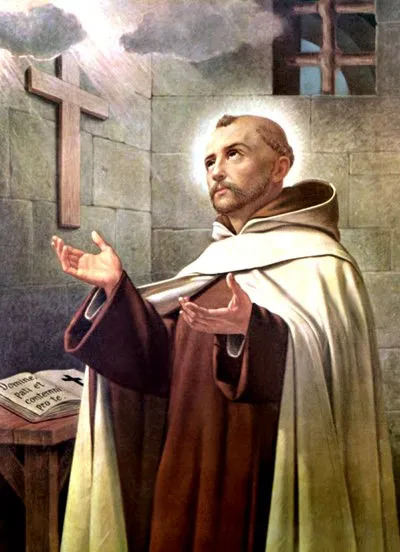
0 notes
Text
Embracing the Shadows
The Transformative Power of the Dark Night of the SoulIn the depths of human experience, where the light of understanding seems but a distant memory, we find ourselves in the midst of what Saint John of the Cross coined the “dark night of the soul.” This phrase has transcended its religious origins to signify a period of profound personal turmoil and existential crisis that, paradoxically, can…

View On WordPress
#Dark Night of the Soul#Ego death#Enlightenment#Existential Crisis#Inner Transformation#mysticism#Personal Growth#rebirth#Rumi#Saint John of the Cross#spiritual awakening#Spiritual Journey
1 note
·
View note
Text
John of the Cross writes the The Dark Night of the Soul and nobody bats an eye...
But when I make my fluffy David/Jonathan animatics, christians.... CHRISTANS CALLS ME GAY!
#the double standards are so unfair!#if you dont know who John of the Cross is... He is a saint that wrote homoerotic poems about God and/or Jesus#John of the Cross#ancient queer history
154 notes
·
View notes
Text




"And in the last talk the brothers will ever share, there’s not just a sense of building tension, but a sadness that this is what it’s come to. Juan’s speech of the “world of wonders” granted to him by opium not only speaks to physical pain, but the long-buried regret that he could never be the Borgia his father wanted him to be. It’s a pain Cesare understands and shares, but one he realizes his brother can never be cured of. Awash in a mix of motivations—revenge, jealousy, pity, duty—he buries his dagger deep into Juan’s abdomen, again and again and again. Cesare takes one of his brother’s arms, Micheletto takes the other, and Juan’s dying form is hoisted over the rail—looking almost Christ-like for a split second—to enter the literal dark void he saw in his visions, one more body consigned to the black embrace of the Tiber."
— The Borgias (2011-2013) — Christ of Saint John of the Cross by Salvador Dalí (1951)
#juan borgia you will always resemble a painting one way or another#the imagery and symbolism and religious themes in this show go extra harder than supernatural tbh like i'm sorry idk#juan borgia#the borgias#david oakes#christ of saint john of the cross#painting#tvedit#perioddramasource#weloveperioddrama#cinemapix#tvarchive#userstream#tvfilmsource#filmtvcentral#televisiongifs#perioddramacentral#perioddramaedit#dailytvgifs#by jen
157 notes
·
View notes
Text
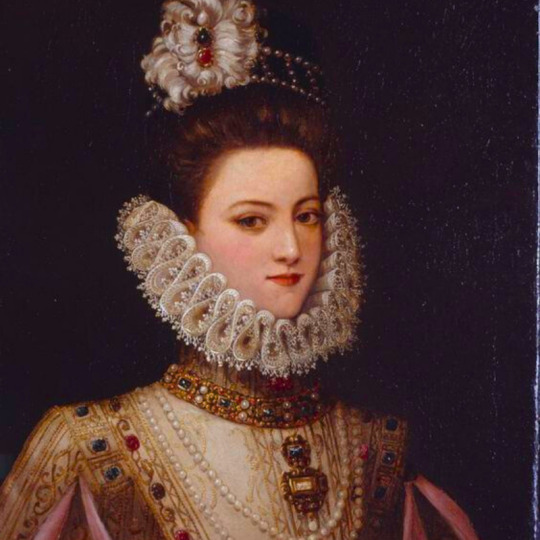
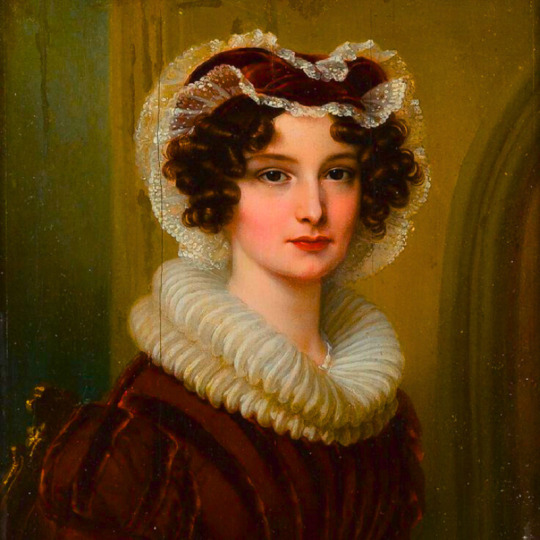
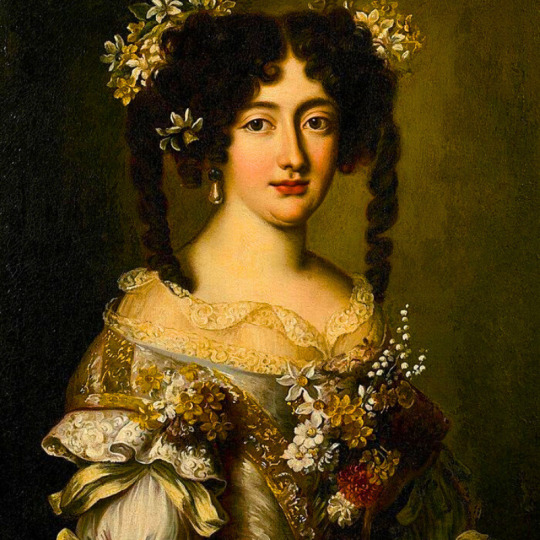
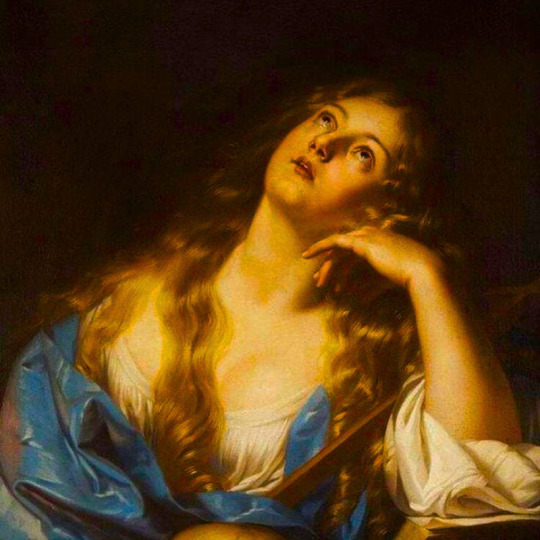
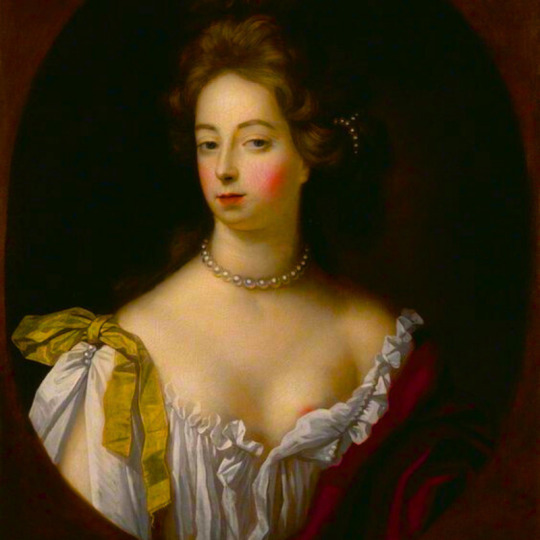
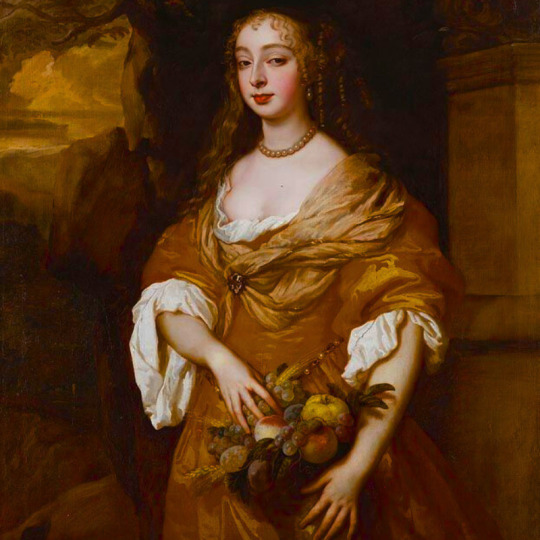
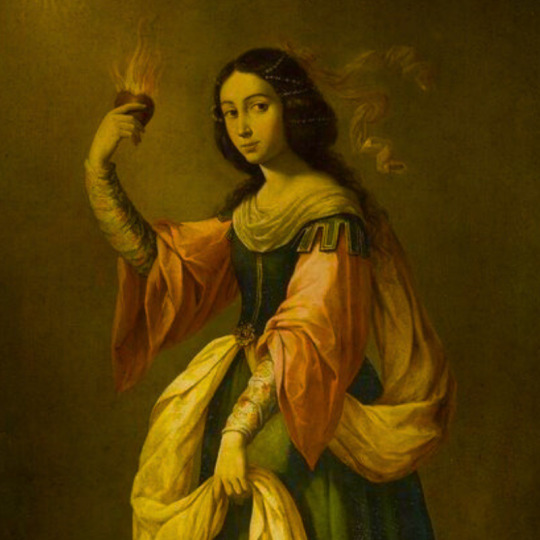
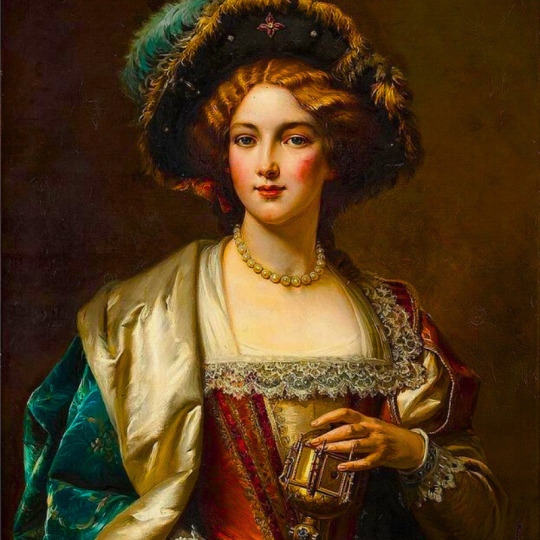
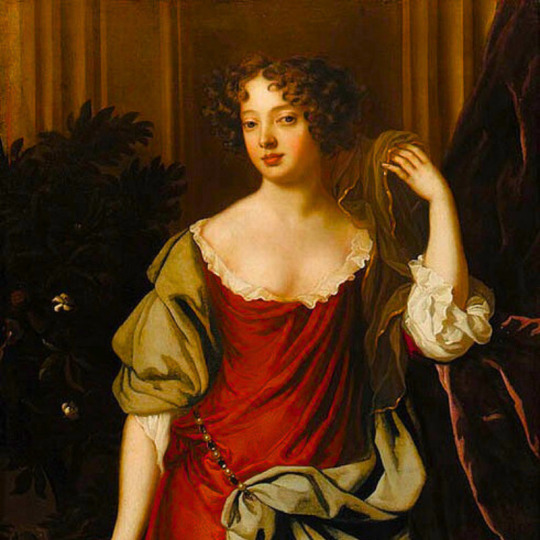



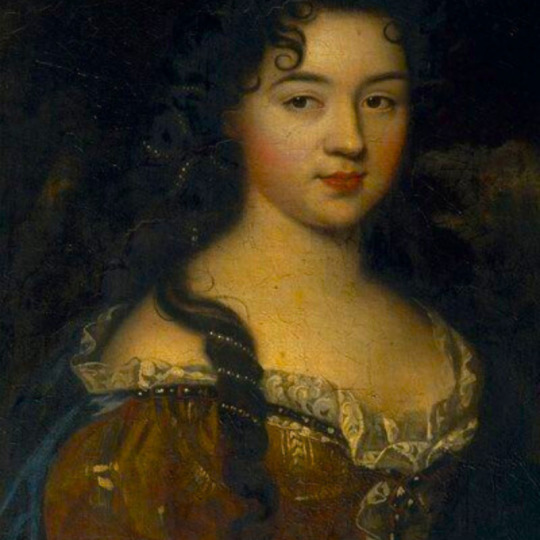




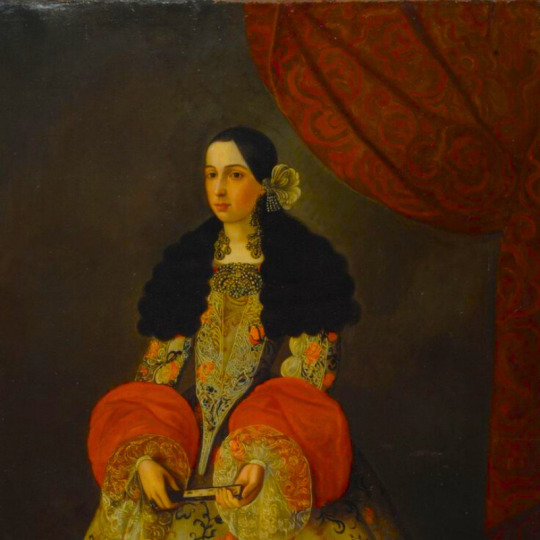


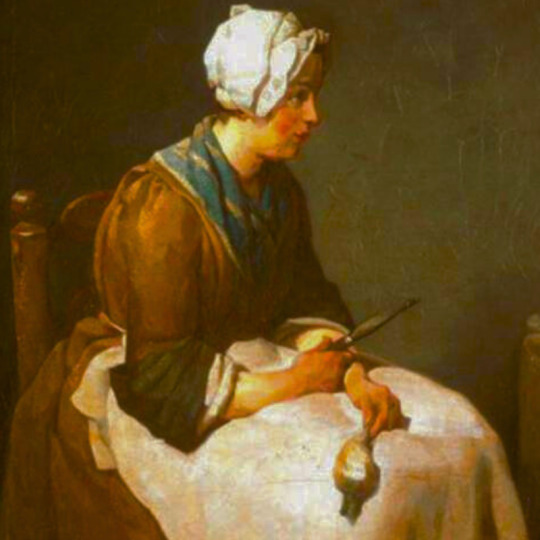
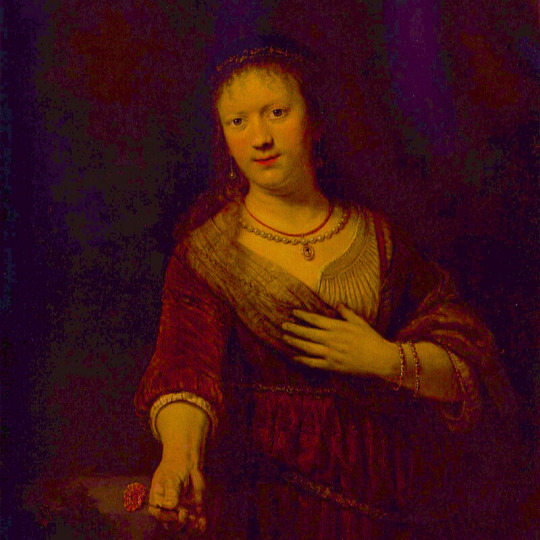

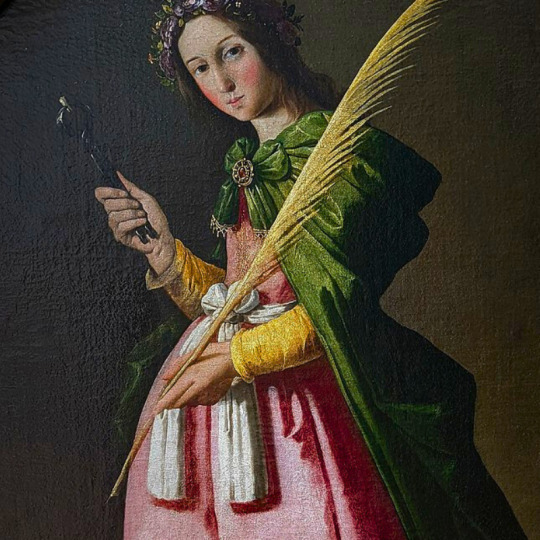

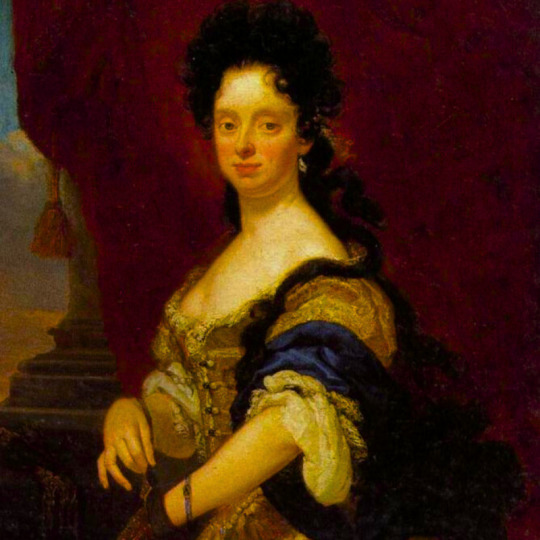




baroque art + women
#a lady by unknown artist#fuger by heinrich friedrich#portrait of ortensia macini by jacob ferdinand voet#mary magdalene by nicolas regnier#nell gwyn by simon verselst#jane needham by sir peter lely#allegory of charity by francisco de zurbaran#portrait of a noblewoman by cesare augusto detti#louise de kereouaille by john michael wright#young woman leaning on book by anne vallayer-coster#portrait of gertrude sadleir by unknown artist#17th century portrait of a girl by unknown artist#portrait of marie mancini by pierre mignard#santa apolonia by artemisia gentileschi#judith and her maidservant by artemisia gentileschi#saint cecilia by guido reni#raising of the cross by peter paul rubens#portrait of an unknown girl by unknown artist#girl reading a letter at a open window by johannes vermeer#public felicity triumphant over dangers by orazio gentileschi#girl peeling turnips by jean simeon chardin#saskia with a flower by rembrandt#penitent magdalene by georges de la tour#sainte apolline by francisco de zurbaran#santa rufina by bartoleme esteban murillo#anna maria de medici by niccolo cassanda#allegory of painting sirani by elisabeth sirani#maria kazimiera sobieska by unknown artist#no title by frans hals#Selbstmord der Lucretia by gudio reni
242 notes
·
View notes
Text
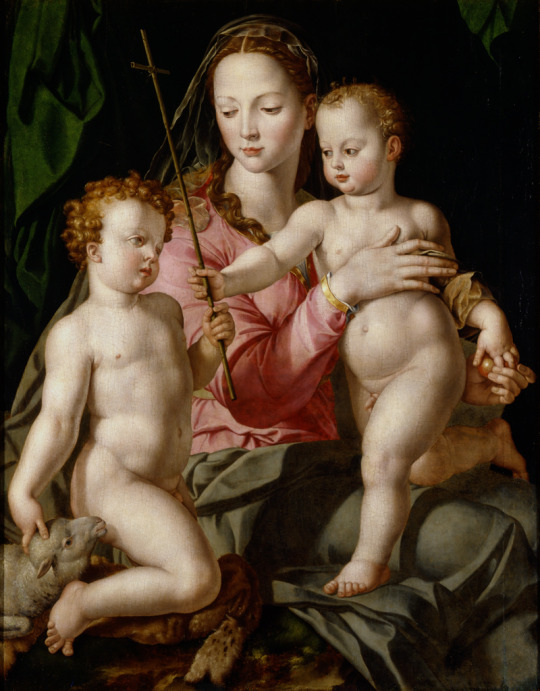
Madonna and Child with the Infant Saint John (1540-1560) by a Follower of Agnolo Bronzino (Italian, 1503-1572), oil on poplar wood, 40 3/8 x 31 1/2 inches, Portland Art Museum, Portland
#madonna and child with the infant saint john#follower of angelo bronzino#painting#oil on poplar wood#portland art museum#portland#oregon#christ child#madonna#cross#mannerism#mannerist#oil painting#poplar#saint john the baptist#16th century#religious painting#christ#jesus#jesus christ#my upload
69 notes
·
View notes
Text

22 notes
·
View notes
Text

It's so over
38 notes
·
View notes